VILLAGE OF THE DAMNED (1960)
A small town's women give birth to unfriendly alien children posing as humans.
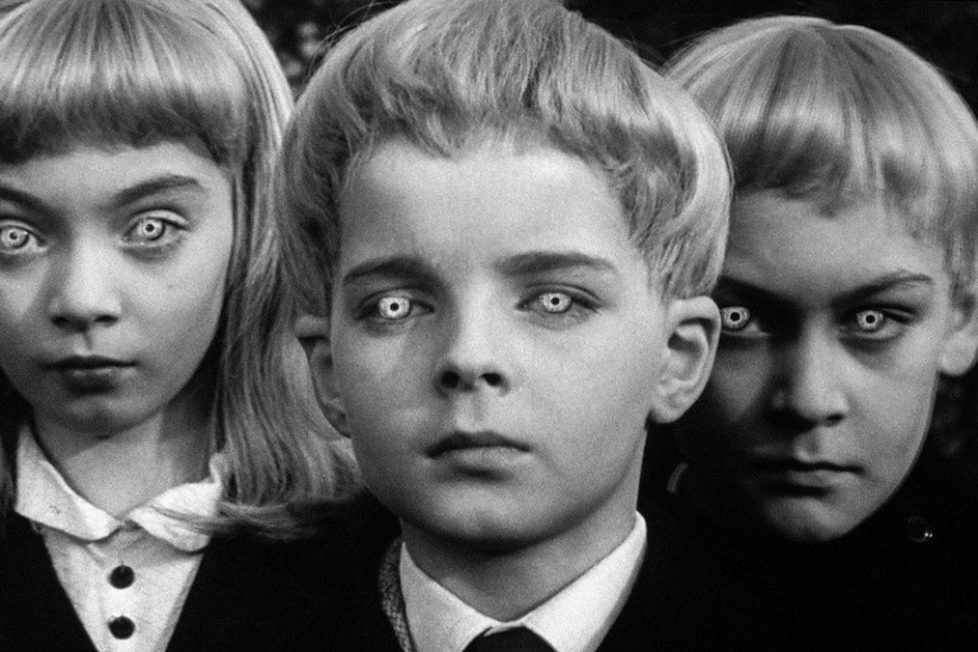
A small town's women give birth to unfriendly alien children posing as humans.


While its melodramatic and misleading title suggests a Hammerish horror of the 1960s period, Village of the Damned is out-and-out science fiction. And while its manner feels dated today its themes are still relevant. Much like the work of author John Wyndham, whose 1957 novel The Midwich Cuckoos it adapts, Village of the Damned explores an existential threat to humanity emerging from a hitherto unknown phenomenon and the way science and individuals deal with it.
Indeed, the famous blonde-haired and glowing-eyed children make few appearances, even if they’re a constant topic of discussion. It’s half an hour into the brief 77-minute runtime before even appear, and until then the story’s been a straightforward science thriller… which, to modern eyes, presages the likes of Steven Soderbergh’s Contagion (2011) in its detailed account of the way a sinister medical situation is investigated.
The first quarter-hour, especially, is superbly tense and makes it seem a pity director Wolf Rilla never produced anything of note afterwards.
Village of the Damned opens with bucolic music as the camera takes in the quiet village of Midwich (actually Letchmore Heath in Hertfordshire, a few miles from production company MGM’s Borehamwood studios). There’s a farmer with a sheepdog, a perfect English gentleman in his country house… all is well with the world. But then the villagers fall asleep, simultaneously, and the strangeness of the images (a tractor running in circles with its driver slumped in the seat, people prone in the road) is complemented by suddenly eerie sounds (a tap left running, a vinyl record skipping and descending in pitch as it slows down). Even the mood of the camerawork changes… being far from restful now, it’s constantly moving, zooming, and panning as if conducting an investigation of its own!
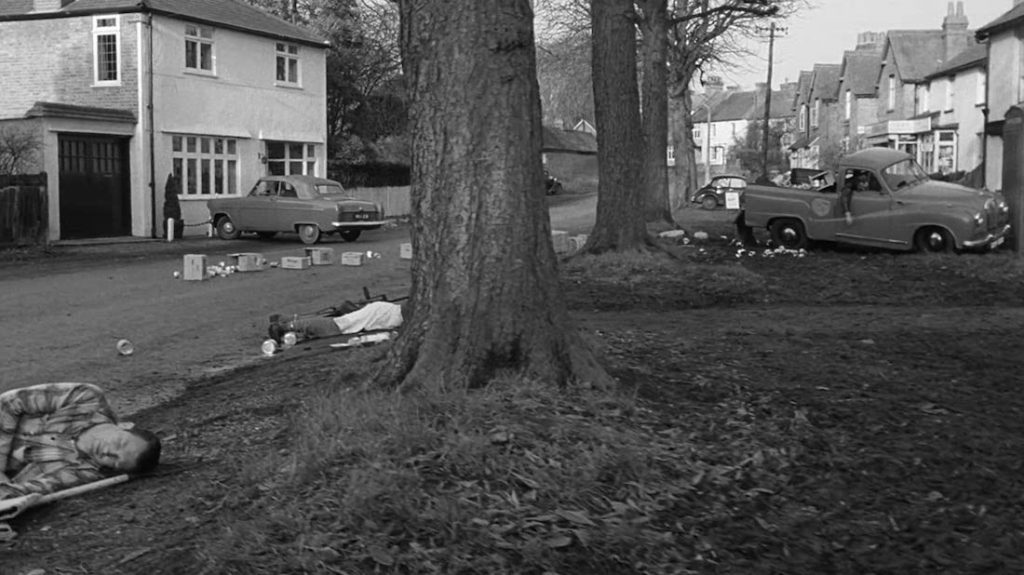
A slightly contrived bit of plotting is needed to bring this bizarre incident to the attention of the army, but one barely notices, so compelling is the sequence that follows as soldiers establish a cordon around Midwich and try to fathom what’s going on. Then, in scenes following the awakening of the village some hours later, we meet our nominal leads…
Zellaby (George Sanders) is that perfect English gent in the manor house and also, conveniently, a scientist. Ronald Colman had originally been intended for the role, which tells you most of what you need to know about it, but he died before the film could be made. (Sanders, curiously enough, promptly married Colman’s widow.) Also among the main characters is Zellaby’s wife Anthea (Barbara Shelley), and his brother-in-law Major Alan Bernard (Michael Gwynn) who conveniently happens to be in charge of the military’s response to the Midwich affair.
None of them is interesting, sadly, but Village of the Damned isn’t telling a character-driven story. Other more minor parts like a baffled but open-minded village doctor (Laurence Naismith), an angry local Pawle (Thomas Heathcote), and a slightly comic postmistress Miss Ogle (Rosamund Greenwood) are nicely sketched-in, but the real stars are the freakish children born to the women of Midwich, nearly all of whom fell inexplicably pregnant on the day of the mass passing-out.
If it’s the children’s rapid physical development and apparent hivemind that unnerves the grownups, what strikes audiences most are the things that make them uncannily unlike ordinary kids: their extreme politeness, their carefully controlled movements when not standing oddly immobile, and their sameness.
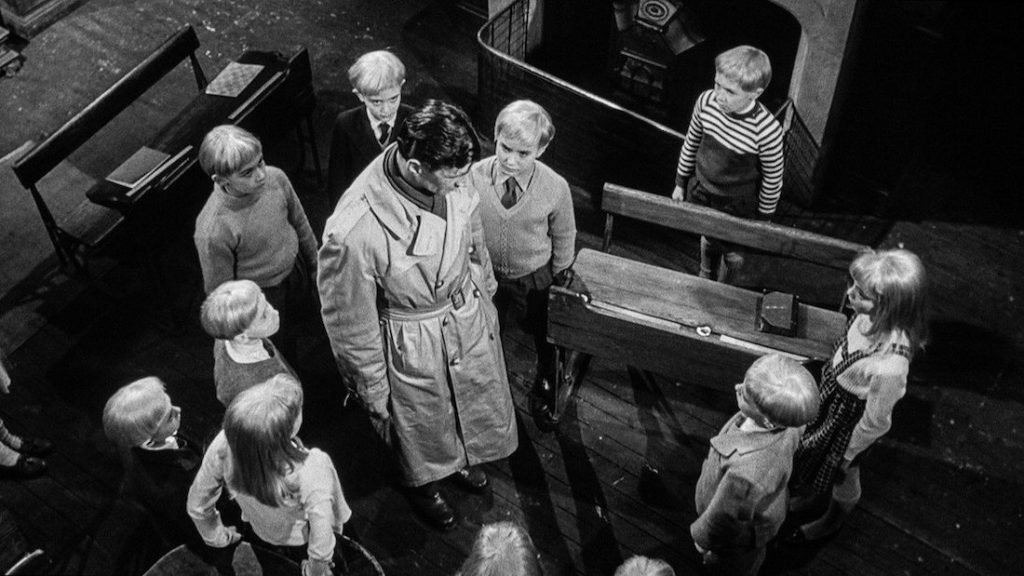
Led by Zellaby and Anthea’s “son” David (Martin Stephens, who’d grow up to play Miles in The Innocents, a critically acclaimed adaptation of The Turn of the Screw) the children are, perhaps, the prototypes for many disturbing youngsters to come in later horror movies.
Most famous, of course, are their peculiarly white eyes… which in some prints glow when they exert mind-control over anyone who displeases them. The glow doesn’t appear on the original UK prints, often presumed removed by MGM in order to obtain an A certificate rather than the more restrictive X, which would’ve prohibited under-16s from seeing the film.
That persuasive theory seems to be unproven, but the iconic eyes nowadays are a mixed blessing for the film. On the one hand, they’re crudely executed by modern standards, so detract from a largely realistic movie… but, on the other, there’s no doubt they are disturbing to behold. And all the more so because the young actors were freeze-framed for the VFX to be applied, heightening their otherworldly stillness.
Contrasts of style—-sometimes reassuringly conventional, at other times unsettlingly modernistic—in the prolific Ron Goodwin’s score similarly help to underline how alien the children.
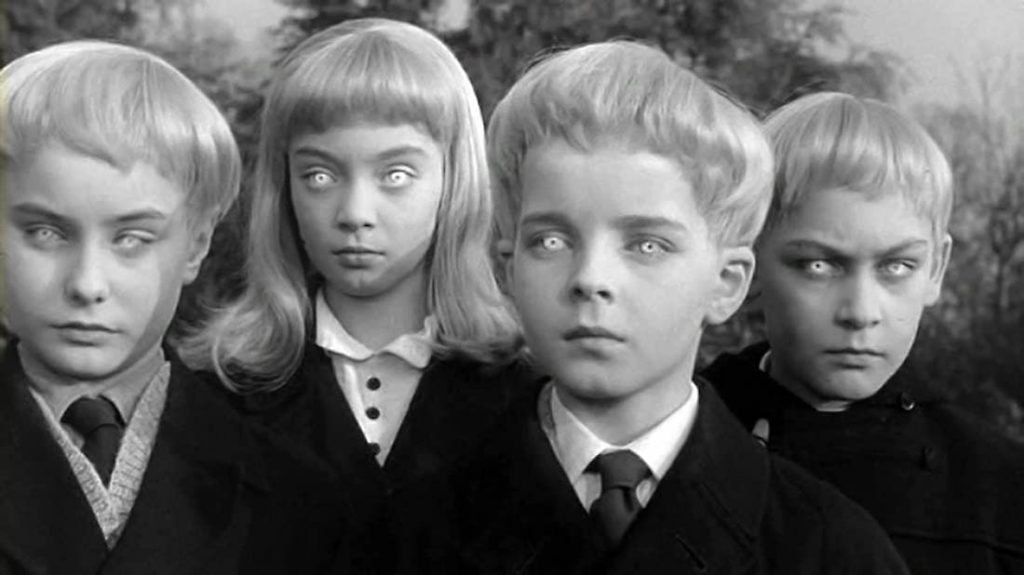
Quite what the children are is never fully explained, however, and that’s part of the film’s effectiveness. We never know what their full capabilities are, what their agenda is, and there’s a later hint they might be even more powerful than we knew. But it’s clear they represent the dangers of change at a time when the world was shifting in so many ways, often through technological progress. Russian nuclear weapons are referenced and David even declares “if you didn’t suffer from emotions, from feelings, you could be as powerful as we are”, conjuring up the idea of the cold, cruelly rational robot.
The awful things wrought by the misuse of science in the 20th-century aren’t ignored, either. The final plan to defeat these unnerving children echoes an unsuccessful assassination attempt on Adolf Hitler and, of course, the identically-dressed, unsmiling, Aryan blonde groups that march around the village harken back to the Third Reich.
And yet, even if the villagers eventually march on their school with flaming torches (a rare descent into horror cliché), Village of the Damned isn’t entirely unsympathetic to these spooky children. “They may be the world’s new people,” Zellaby muses. Just because they’re different from us doesn’t necessarily mean they’re bad, the film seems to be saying. Anthea at one point speaks to David in a decidedly liberal way which might even bring to mind the immigration debate of the 1960s: “wherever it is you come from, you’re part of us now. Couldn’t you learn to live with us, and help us live with you?” It’s this genuine uncertainty in how to respond that (at least for most of its running time) gives Village of the Damned an unusual profundity.
And it’s the clash of harsh new fears with the comfortable familiarity of its small community and rural setting (the cycling bobby, the country telephone exchange) that gave it so much potency in the 1960s, as well as now when many things that worry us aren’t dissimilar in principle.
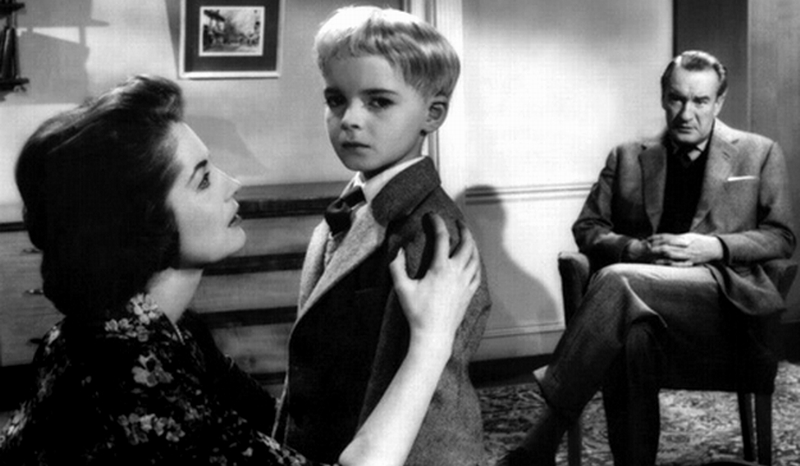
Indeed, the movie isn’t afraid to tackle its own implications bluntly. In one brief but especially memorable scene, a group of men stand in the village pub, pensive, all completely silent, until one abruptly says “I hope that none of them lives.” Sometimes, this passage seems to be proposing, we must consider the unthinkable (here, infanticide) in order to save what we value.
Credit for many of these subtleties must surely go to writer Stirling Silliphant, who had mostly worked in television but went on to write the screenplays for films like The Poseidon Adventure (1972) and The Towering Inferno (1974), as well as winning an Academy Award for In the Heat of the Night (1967).
The ideas that Wyndham and then Silliphant developed resonated strongly with both critics and audiences in 1960. As well as being a commercial success, Village of the Damned was highly praised by reviewers, with the British Film Institute’s Monthly Film Bulletin describing it as “probably the neatest science-fiction film yet to have come out of a British studio”, while The New York Times’s Howard Thompson reported that “as a quietly civilized exercise on the fear and power of the unknown this picture is one of the trimmest, most original and serenely unnerving little chillers in a long time”.
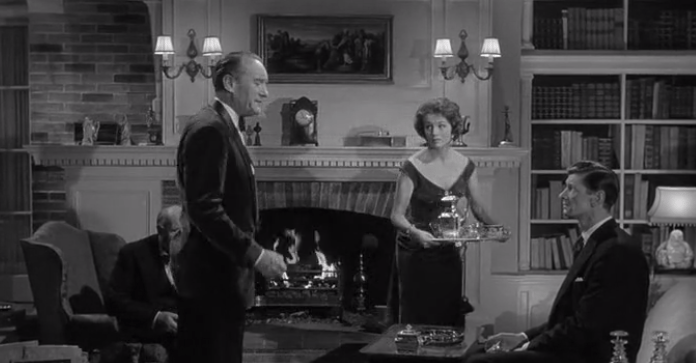
Fainter praise came for its 1963 follow-up, Children of the Damned. This wasn’t a direct sequel but another exploration of the same premise, in which Midwich-like children from around the world gather together in London. Less successful still was John Carpenter’s 1995 flop remake starring Christopher Reeve that relocated events to California.
The original Village of the Damned never needed a sequel or a remake, anyway. Like many such movies, it draws strength from its terseness and lack of excessive explanation or development. The story essentially boils down to something disturbing happens. Sure, there’s a traditional narrative and characters participating in events on the surface, but what makes it work are its thoughtful observations and ruminations on exactly why something is disturbing.
It’s also now a period piece over half-a-century later. The quaint England it depicts is long-vanished and the casual sexism of Wyndham’s fiction is sometimes (though not always) on display. Yet the underlying disturbance, the inexplicable arrival of something strange that out technology seems helpless to defeat, is as potent in the age of climate change and COVID-19 as it was at the height of the Cold War. Village of the Damned is one of those genre movies that truly deserves the over-used description of “classic”.
UK| 1960 | 77 MINUTES | 1.85:1 | BLACK & WHITE | ENGLISH

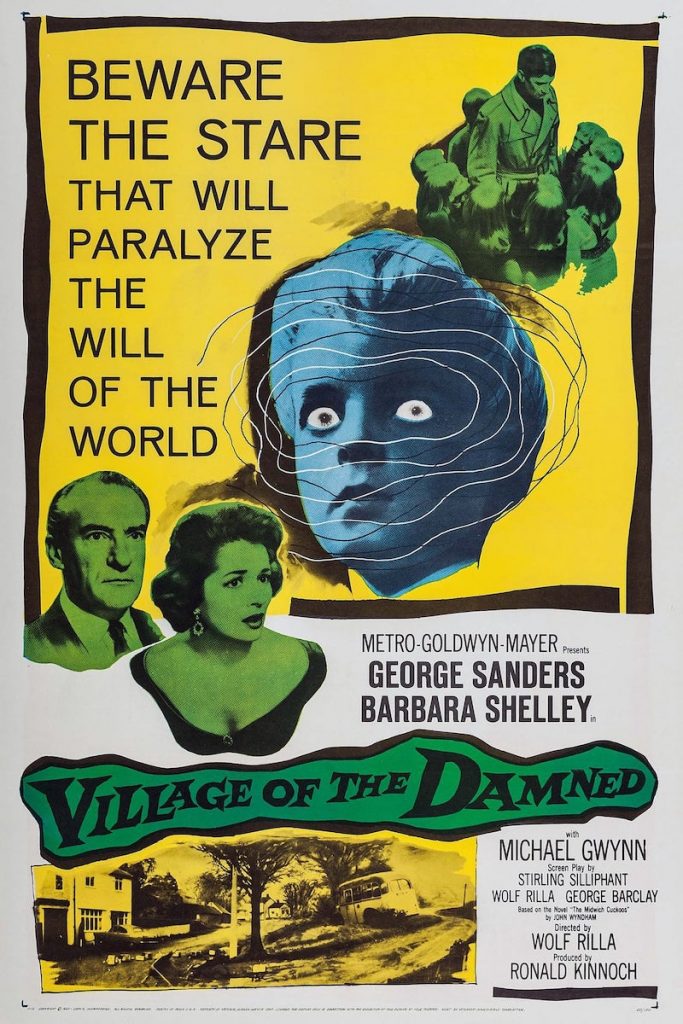
director: Wolf Rilla.
writers: Stirling Silliphant, Wolf Rilla & Ronald Kinnoch (based on ‘The Midwich Cuckoos’ by John Wyndham).
starring: George Sanders, Barbara Shelley, Martin Stephens, Michael Gwynn, Laurence Naismith, Richard Warner, Jenny Laird, Sarah Long, Thomas Heathcote & Charlotte Mitchell.
1 Comments
This site uses Akismet to reduce spam. Learn how your comment data is processed.

So good. A movie like this is classic. Timeless.